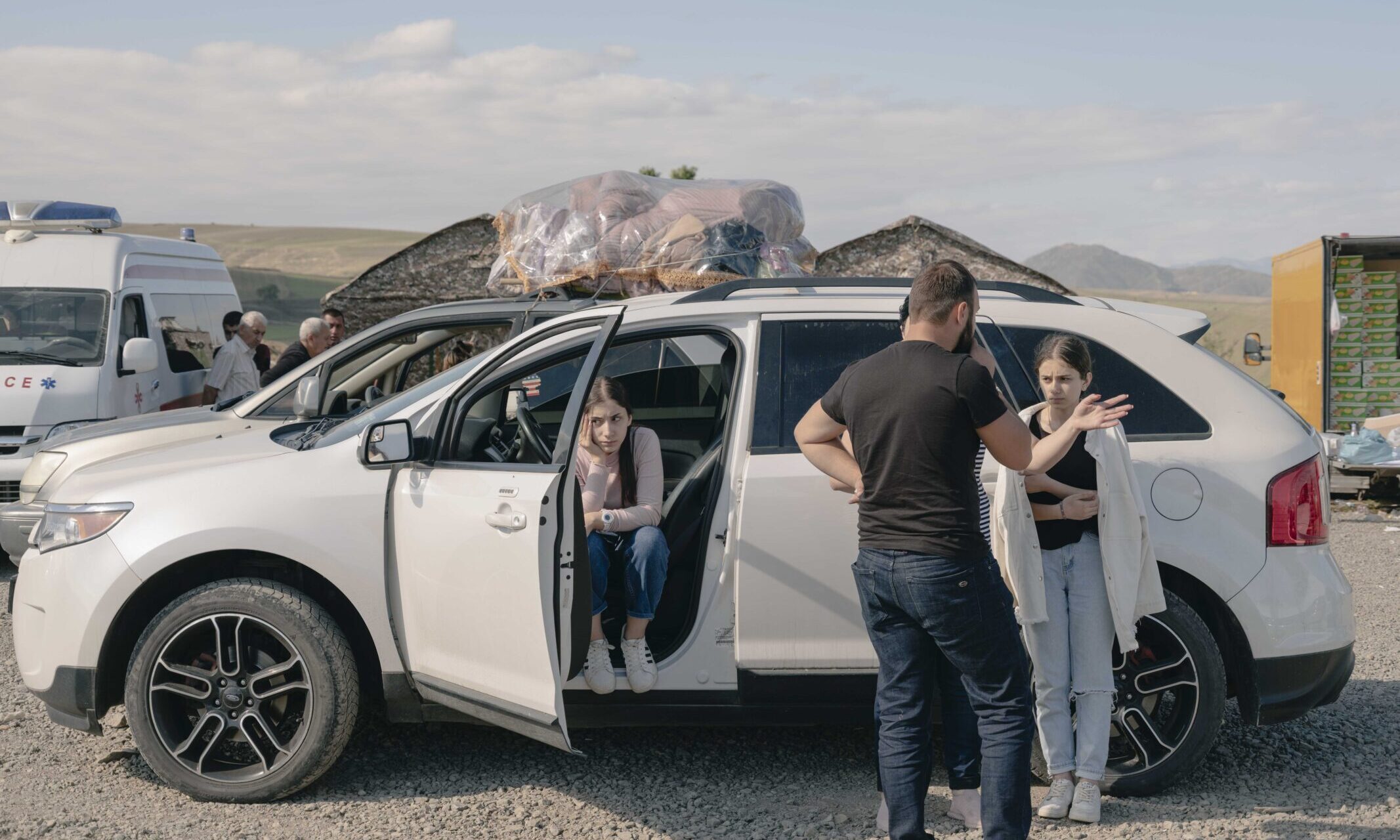Photos credited to: Rebecca Topakian
What should have been a two-hour drive stretched into twenty. Families pressed their heads against their car windows, watching their homeland slip further away as they fled Artsakh for Armenia. The air smelled of gasoline and smoke, thick enough to cling to the clothes, belongings, and livelihoods hastily strapped onto the tops of cars. The road ahead was uncertain, but the road back was impassable, sealed both by shelling and the knowledge that what was left behind would never be the same.
Nina Shahverdyan was in that line of cars. Born and raised in Stepanakert—the capital of Artsakh, known internationally as Nagorno-Karabakh––she lived through the 2020 war and worked as a teacher in rural villages across the region. She saw firsthand the fragility of home. “It was a mixture of being afraid… and not knowing what Azerbaijan would do to us next,” Nina told The Politic, speaking on border firefights and blockades that punctuated her everyday life.
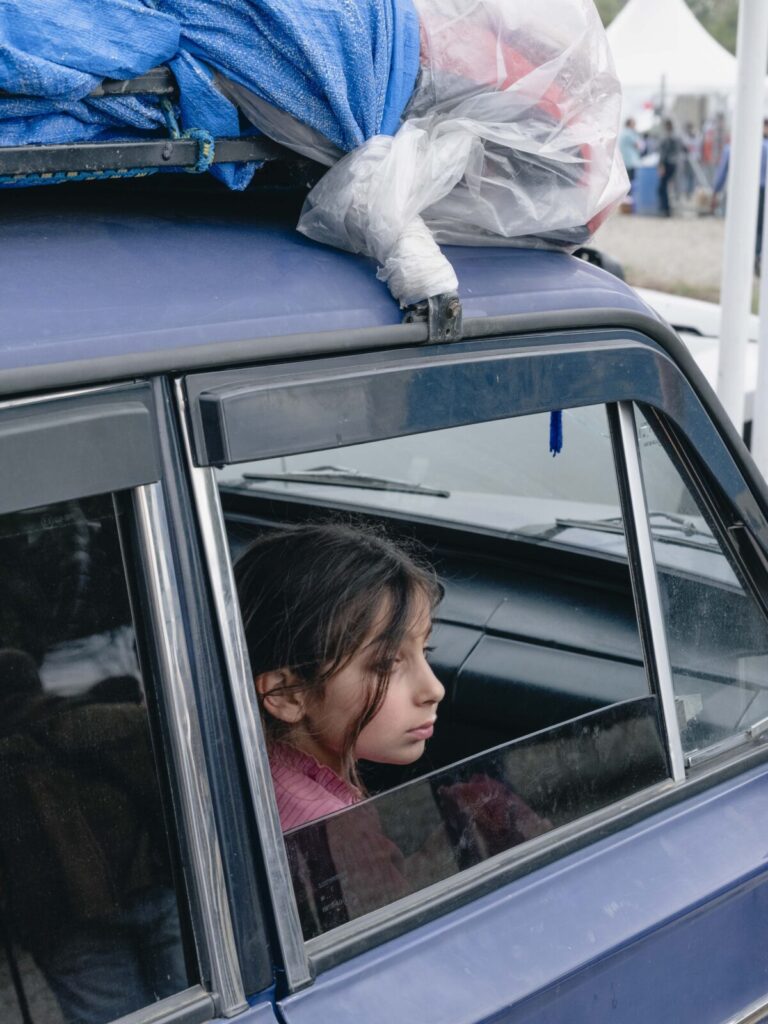
On September 19th 2023 the “first bombs started being dropped on Stepanakert.” Nina and her family initially dismissed them as isolated skirmishes, but when Azerbaijan continued to shell the city and the Russians opened the passage, she knew this time was not like the others. “Nobody took it seriously, until it became serious.”
Leaving Stepanakert, Nina felt a sense of disbelief and hopelessness more than fear, “You live there without ever expecting that you’ll lose it. You have your house and in the next hour you don’t. You leave and don’t know what kind of future you’re going to have… Deprived of your house, your homeland, the life you built—you cannot do anything against it because you’re so weak. You’re so weak you can’t even eat whatever you have to eat. Then there are people that died and their bodies are still there.”
Nina recalled the humiliation more than anything—the sense of being stripped of dignity and being powerless to fight back. For her, the pain was far more than the material devastation, but knowing her and others could do nothing as they watched their homeland disappear. Hours of waiting blurred together with images of burnt bodies amid a sense of unknown for both their immediate and far future. “Nobody could give you any promises, and if they do promise, you can’t believe it,” Nina said. “You need to save your family; it’s like an apocalypse and you have to escape.”
Rebecca Topakian, a French photojournalist, was on the ground during the evacuation of Artsakh, capturing stories of families fleeing their homes. Her photographs showed faces marked less by anger and more by sadness. Her camera caught the smaller tragedies that would never make international headlines. On the twenty-hour road, she met a family travelling with a girl no older than five. Her father had left with other men to fetch fuel when an explosion struck the area nearby—he never returned. Strangers took the girl in, assuming her father was dead.
The hospital in Goris, Rebecca recalled, was no less haunting. An unconscious old woman lay alone with no family, no name, no village, nothing anyone could identify. In the same ward lay a sick baby said to be from an orphanage. “Every story was heartbreaking,” Rebecca said, “some worse than others, but all bad.”
Rebecca spoke about the profound sadness she saw in people, especially in those who had experienced the wars in the past. “If you fight, and even if you lose, you’ve been fighting,” she said, talking to veterans of the 2020 conflict and even older veterans of the post-independence wars in the 90s. It was the loss of identity and of agency compounded by the fact that, this time, Armenians were unable to fight back.
The grief was not only born from violence but from a long and tangled history stretching from Soviet rule to the wars that scarred the first decades of independence.
***
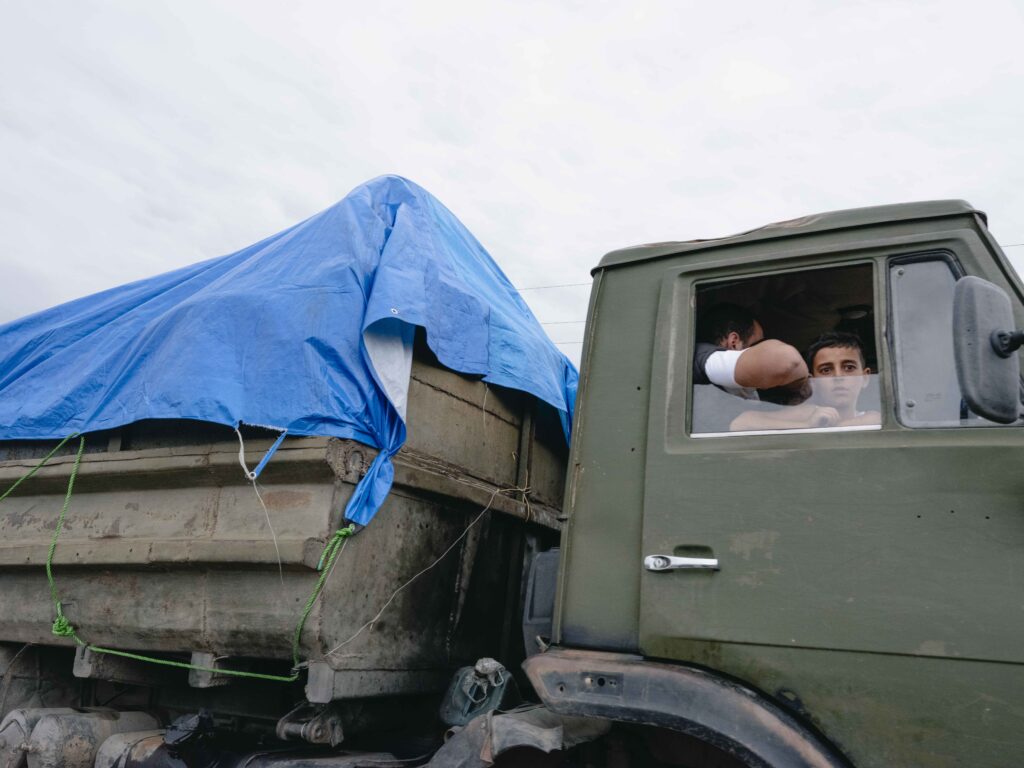
Nagorno-Karabakh’s contested status can be traced back to the origins of the Soviet Union, when, in 1923, Stalin incorporated the Armenian-majority territory as an autonomous oblast inside the Azerbaijan Soviet Socialist Republic (SSR). This move represented Moscow’s broader divide-and-rule strategy of mixing ethnicities to keep the periphery dependent on the central government. Armenia viewed it as Soviet expropriation; Azerbaijan as a confirmation of territorial sovereignty. Soviet control delayed tensions, yet the underlying grievances remained.
Richard Giragosian, director of the Regional Studies Centre in Yerevan, framed the conflict as one of Soviet legacy. “This is largely a result of colonial history,” he told The Politic, referring to the frozen conflicts that emerged after the dissolution of the USSR in the early 1990s. Both Armenia and Azerbaijan, he added, were unprepared for independence, their statehood and democratization distorted by war. With “Russia distracted” by Ukraine in the present day, Azerbaijan was able to exploit the power vacuum and assert dominance over Armenia.
The uneasy balance collapsed in 2020, when a six-week war ended with Azerbaijan defeating Armenian forces. A Russian-brokered peace deal stationed peacekeepers in Karabakh and the Lachin corridor (the only road to Armenia from Karabakh), but left the region vulnerable. In 2023, a blockade gave way to bombardment, and after Yerevan relinquished control, Armenians fled en masse as Karabakh was absorbed into Azerbaijan. The shock was not only in the loss itself, but both in the speed and finality of which a homeland was emptied.
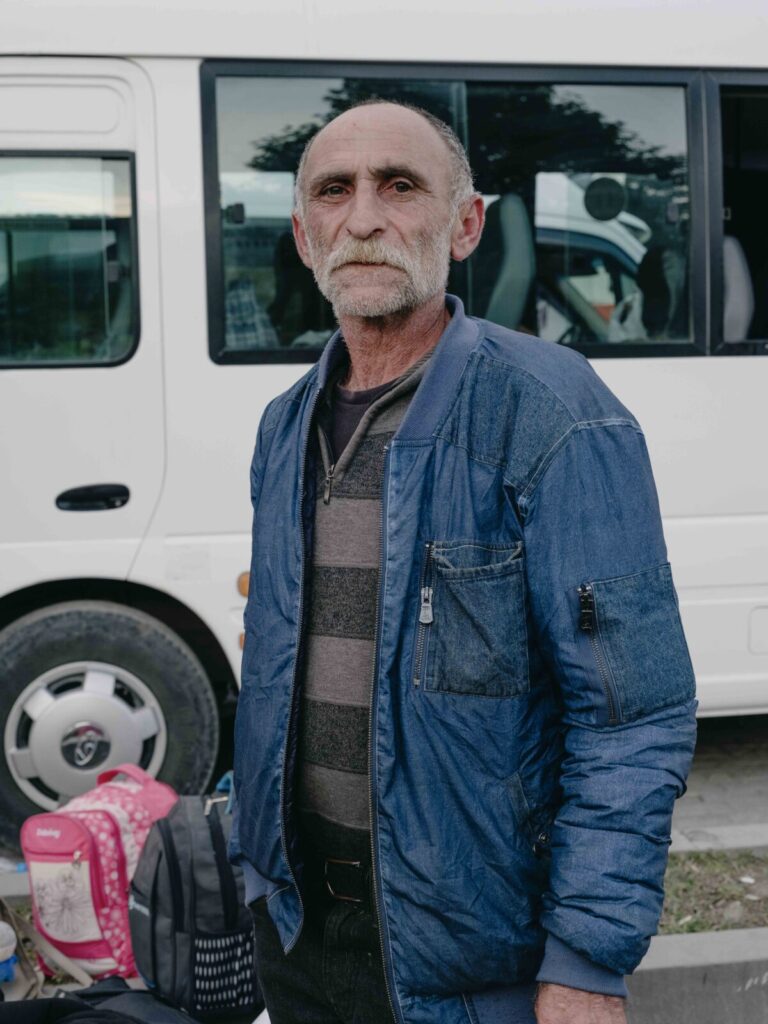
The wars redefined both nations and their leaders. In Yerevan, Prime Minister Nikol Pashinyan, elected in the country’s first free and fair elections in May 2018, was recast as the subservient, weak leader who gave up Karabakh. In Baku, President Ilham Aliyev, long ruling under the shadow of his father’s legacy, emerged victorious, presenting the recovery of Karabakh as his crown jewel, legitimizing his dynastic rule.
Their duel was not only fought on the battlefield. For decades post-independence, international mediators had tried—and failed—to resolve the Karabakh conflict. The OSCE Minsk Group, co-chaired by the US, France, and Russia, cycled through proposals without arriving at concrete solutions. Matthew Bryza, former US Ambassador to Azerbaijan and former co-chair of the Minsk Group, claimed the “leaders were not ready to make politically painful compromises because their societies couldn’t accept it.” After the wars and in 2023 especially, the Minsk process faded, replaced by power politics.
In August of 2025, in a turn back to negotiation, they met in Washington. Under the gilded lights of the White House, Trump staged what looked like a peaceful resolution: Aliyev and Pashinyan shaking hands across the table, Trump’s own hands holding theirs together, as if physically binding them together. The deal promised stability and a peaceful future, but beneath Trump’s camera-ready clasp lay decades of mistrust and the unresolved human question of loss, memory, and belonging.
The agreement itself had two parts. The first, according to Giragosian, was a “unilaterally imposed peace treaty by Azerbaijan that Armenia had no choice but to accept.” Giragosian was more optimistic about the second, involving the commitment to build roads and connectivity between the two countries, arguing that longer-term economic interdependence would ensure lasting ties.
***
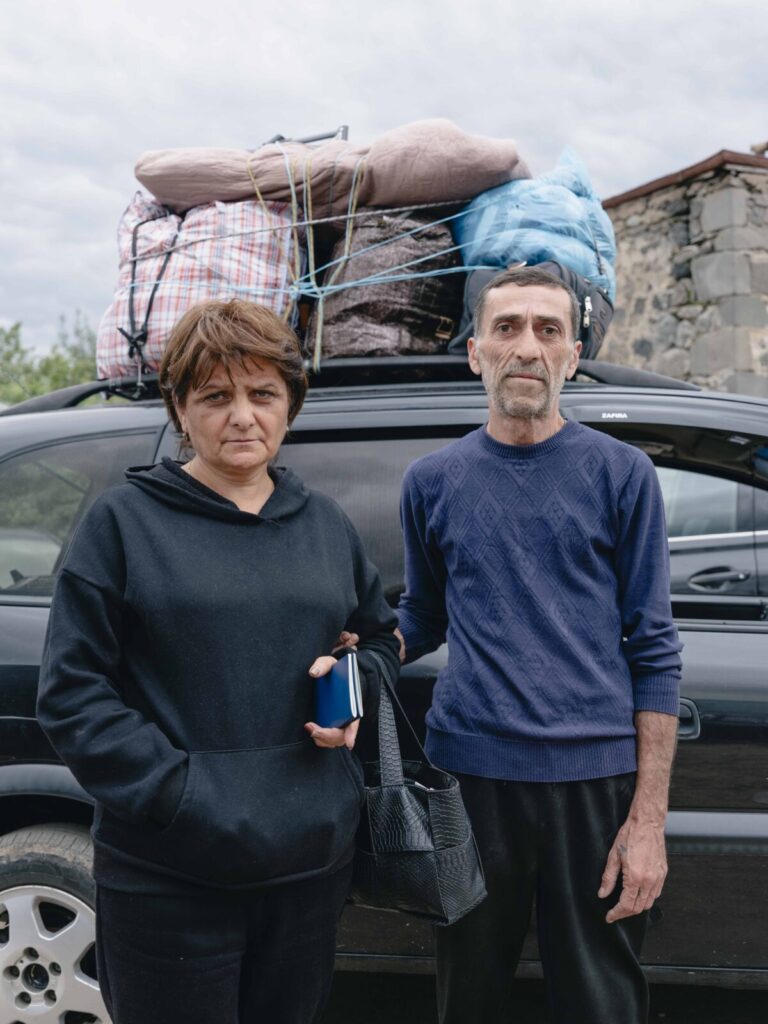
In Armenia, reactions to the peace deal were largely negative, though analysts viewed it as a significant step forward in normalization and regional stability. On one hand, Giragosian mentions significant concessions on the Azerbaijani side, renouncing the use of force and claims to extraterritoriality; on the other, he recognizes the limitations of the treaty in that there are no international guarantees and guarantors, and that Armenia has to renounce the mandate of the Minsk Group. This uncertainty is dangerous for a treaty rewarding the use of force by Azerbaijan, and “endorses a win for an authoritarian state over a struggling democracy.”
Giragosian praises the return to diplomacy and the rule of law yet simultaneously criticizes the treaty for making “no mention of Nagorno-Karabakh” and the “over one hundred thousand Armenians who were forcibly expelled in 2023.” This sentiment is echoed by Nina and other Armenians, noting that the 23 Armenian prisoners of war in Azerbaijan have not yet been released. “One of the prisoners of war is my Godfather,” Nina said. “It feels a bit like a reminder of your weakness.”
Armenians trace this docility in foreign policy back to Prime Minister Pashinyan. “He’s clearly choosing to be very submissive,” said Topakian. As a small state surrounded by more powerful neighbors, Armenia has long relied on compromise. However, critics argue Pashinyan has gone further, eroding both Armenian dignity and sovereignty. Nina pointed to his decision to comply with Turkey’s request to remove the symbol of Mount Ararat from its border stamps. “Peace is established through power,” she said. “When Pashinyan tries to establish peace through compliance and being a slave to Azerbaijan that’s not going to lead to peace. What’s happening now is an illusion of peace.”
Yet even Pashinyan’s harshest critics concede that alternatives are scarce. Giragosian observed that opposition parties enjoy little public support and lack coherent strategies. Topakian echoed this, arguing Armenia’s political class remains unprepared, as a young republic lacking democratic tradition. Pre-Pashinyan, she added, the system of corrupt oligarchs was far worse. Pashinyan’s dominance stems less from popularity and more from the absence of legitimate alternatives.
The Armenian diaspora’s reaction is even more uncompromising. The Armenian National Committee of America (ANCA) denounced the deal for ignoring Nagorno-Karabakh, the right of return for displaced Armenians, and argued the economic deal commodifies Armenian land and sovereignty for US and Azerbaijani interests. Giragosian shared a pragmatic outlook, arguing that Armenia needs to focus on its future security and development and accept Karabakh as a fait accompli. “It’s easier to be a hardline nationalist when you live in Los Angeles than if you live in Yerevan,” he added.
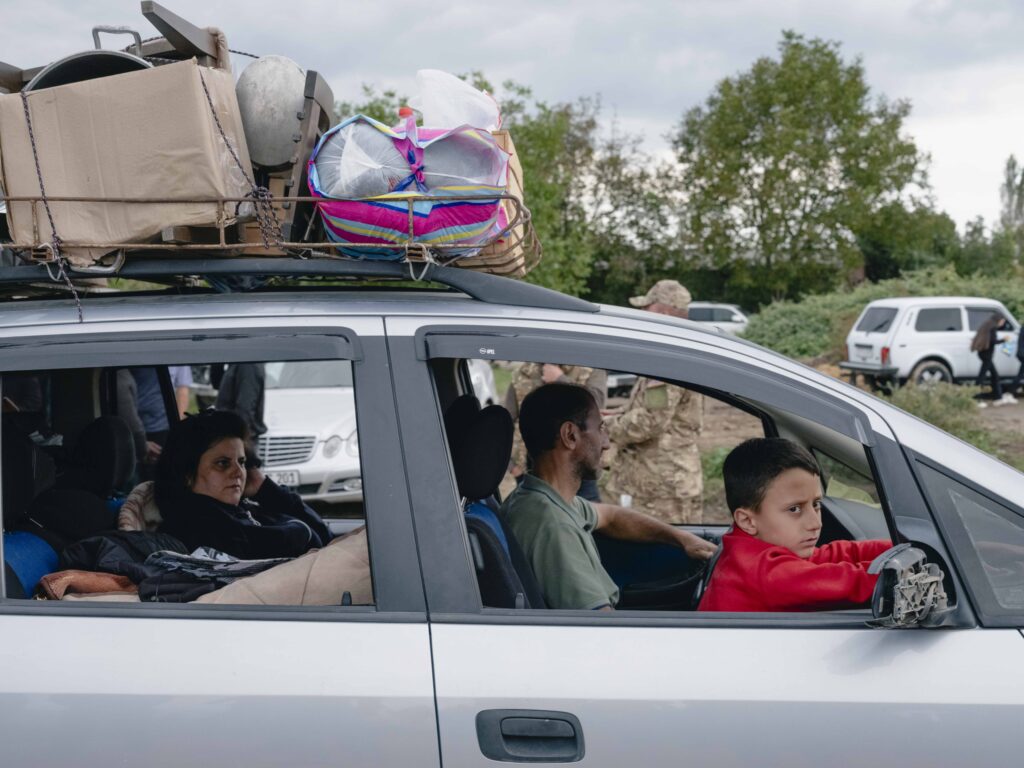
Together, these reactions underscore the paradox at the heart of the deal. While it may be a breakthrough, Armenians experience it as a codification of defeat that ignores the human cost of displacement, identity, and lost dignity. Nonetheless, officials insist the country must look ahead. As a vulnerable state in a post-Karabakh world, Armenia’s path to development and prosperity lies in embracing peace and channeling its energy towards the future rather than the past.
***
In Baku, the peace deal was framed as the restoration of sovereignty and as international recognition of Azeri territorial integrity. State media cast it as a step forward both politically and commercially, opening the door to new trade routes and economic integration in the region. Principally, it legitimized President Aliyev’s dynastic rule, brought him out of the shadow of his father and cemented his place in history as the leader who took Karabakh, something no one had accomplished before. “The Azerbaijanis are happy,” said Bryza. “They have to be happy, because President Aliyev’s happy.”
Yet, Bryza suggested this very success may leave Aliyev in a bind. Authoritarian leaders often rely on an external enemy to galvanize popular support and justify domestic repression. With newfound peace, if Armenia ceases to serve this role, Aliyev may have to contend with domestic tensions and find a new means to legitimize his authoritarian rule. Critics argue Baku’s current maximalist posture may risk repeating Armenia’s mistake in the 1990s, winning the battle but losing the longer struggle for stability, durable peace, and domestic growth.
For Azerbaijan, the alternative to regional maximalism lies in looking outward. Oil and gas give Baku opportunities beyond the South Caucuses to forge new relationships with Central Asia, the Middle East, and China. Economists argue domestic security will come not merely from perpetual confrontation, but from economic interdependence–pipelines running West, IT booming in Yerevan, and trade that consigns conflict to the past. Looking outward, rather than inward.
Azerbaijan’s victory, then, presents a dilemma. It has removed the enemy that long sustained Aliyev’s rule, but has opened new opportunities for regional cooperation and growth. Whether Baku defines itself through continued confrontation or through interdependence will shape not only its own future, but Armenia’s as well. Beyond the South Caucuses, these choices ripple outward, from Russia to Turkey and the West (or even the East), the deal presents opportunities and tests of regional stability.
***
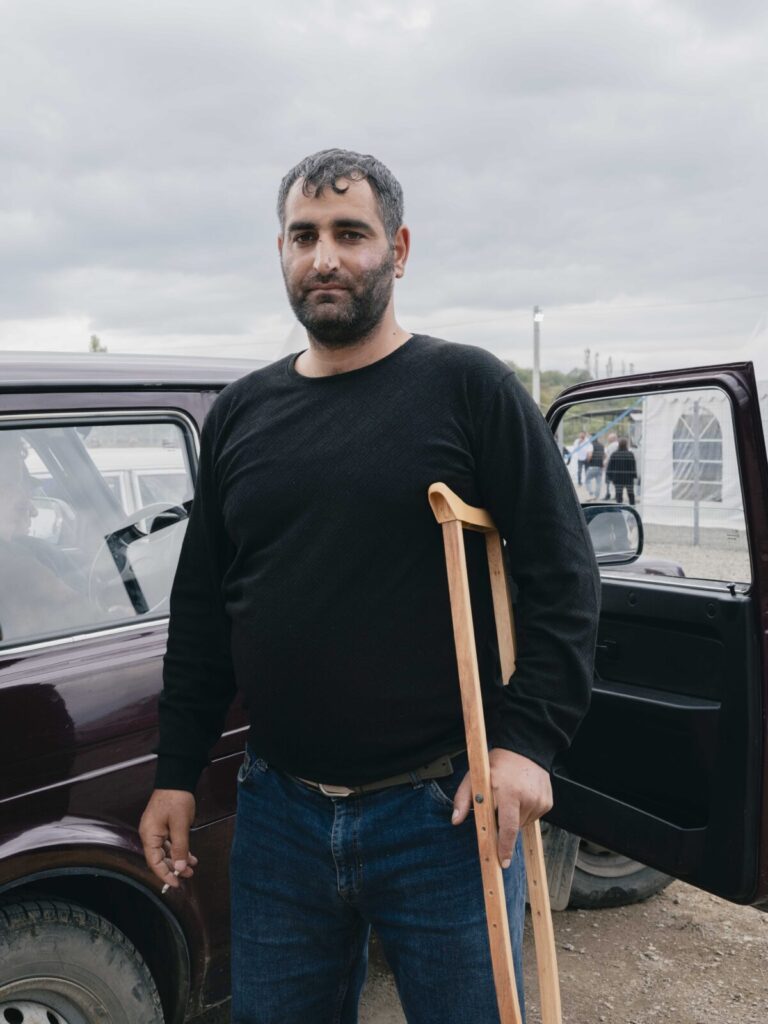
According to Bryza, the deal was an “utter humiliation for Russia.” Once the undisputed power broker in the Caucuses, Moscow has been sidelined by Washington in a region traditionally under its influence. Russian peacekeepers, tasked in 2020 to protect Karabakh and the corridor, are all gone. “Who’s going to do the security? I don’t know, but it’s not going to be Russia,” Bryza remarked. The retreat reflects Russia’s broader geopolitical decline. Preoccupied and weakened by war in Ukraine, Russia has minimal bandwidth to meddle in the Caucuses. Nevertheless, Giragosian cautioned that Russian absence may only be temporary, considering Russian interference in the 2024 Georgian elections. With Armenia “looking for more Turkey so they have less Russia,” Giragosian warned of an “angry, vengeful Putin” returning to reassert Russian influence in the near future.
With Russia cast as the “enemy dividend” in Azerbaijan, Armenia is no longer the villainous foil it once was. Giragosian argues this creates momentum for limited normalization, if not longer-term reconciliation, between Baku and Yerevan. Ankara, meanwhile, has consolidated its position as Azerbaijan’s closest ally, strengthening military and cultural ties under the overarching motto of “one nation, two states.” The proposed Zangezur corridor would further cement this, linking Turkey and Azerbaijan to the Caspian and Central Asia. Still, Turkey’s ascendance is not without limits, with some observers noting Aliyev has sought to diversify partners to avoid overdependence on Ankara.
Turkey-Armenia relations are still cold, with closed borders and domestic political tensions. Deeper hostilities underline this diplomatic standstill, formed by a complicated history and the enduring denial of the Armenian Genocide. Speaking at a Yale event in October, former Turkish politician Garo Paylan said he tried to raise the issue in parliament. “But if you use the G-word in parliament, you can be lynched… they are not ready with our struggle,” he said. As the century-old trauma remains unacknowledged by Ankara, many Armenians feel reconciliation is impossible without recognition.
Trump’s 2025 deal was a symbolic breakthrough for US diplomacy in the post-Soviet space. In the past few years, American involvement has grown in Armenia’s economy and through diplomatic ties, particularly through partnerships in the country’s rapidly growing IT sector. Bryza argued that economic stability and growth through US investment could do more to anchor long-term security than any military or peacekeeping force. Still, as Giragosian noted, much of Washington’s attention is shaped less by the White House but more so by the strong Armenian-American lobby in Congress.
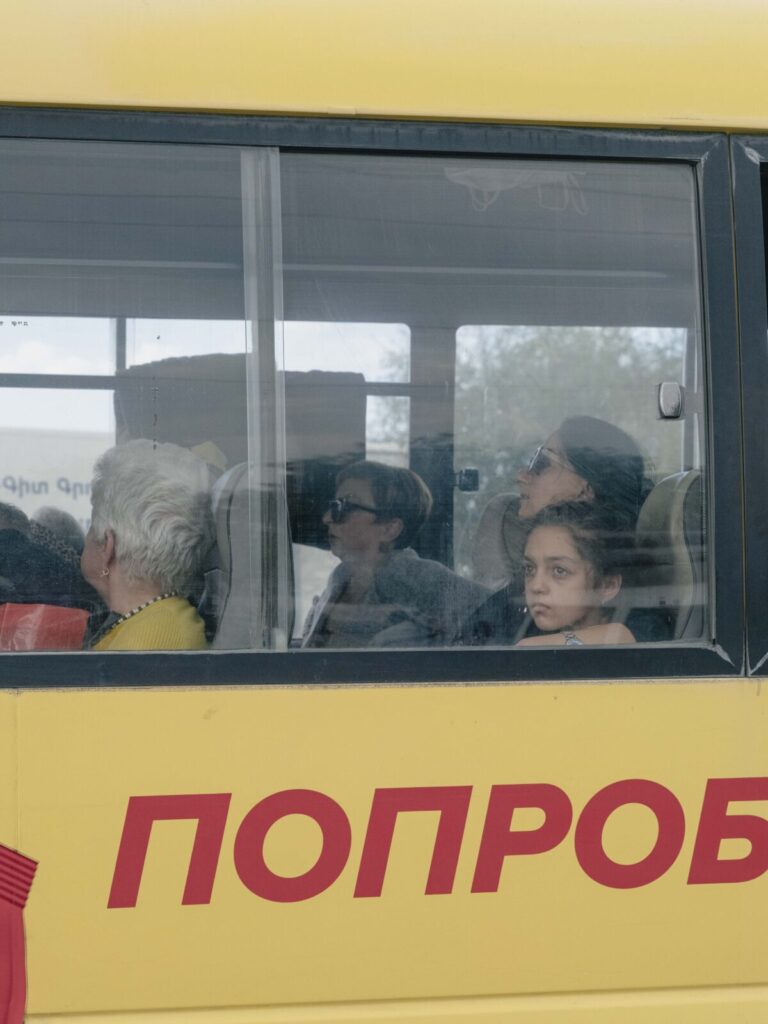
With Russia’s retreat and America’s sudden engagement making headlines, the quiet reality reflects a broader multipolarity. The European Union has emerged as a middle ground, less threatening to Moscow, yet more effective in supporting governance, trade, and investment. China, drawing on its experience in Central Asia, is positioned to fertilize the Caucuses not militarily but economically.
Alongside the major players, Giragosian pointed out a so-called “junior varsity” of geopolitical actors with growing influence in the Caucuses, including India, Israel, Pakistan, and now even Japan and South Korea. For Armenia, he argued this diversification is not only welcome but essential. “We don’t want to be trapped in the zero-sum game of the West versus Russia,” he said. The outreach to China, India, South Korea, and Japan is less provocative, more sustainable, and offers leverage to bargain with both Moscow and Washington alike.
Still, as Giragosian admitted, this strategy is less about winning than it is about surviving; a vulnerable hand played carefully, hoping to secure a future still unknown.
***
For Rebecca, the photographs of burned-out cars and orphaned children linger as reminders that behind peace treaties, many thousands of lives are uprooted. To her, the danger of war remains real, fed by authoritarian ambitions, irredentist policies, and a submissive Armenian government. “Armenia may not be a country in ten, 20 years,” she said. The loss of Karabakh was not only territorial but existential, a rupture in identity that no deal or agreement can capture. Even as Pashinyan and Armenia may move on politically, the memory of Artsakh endures in stories, grief, and the quiet determination to keep the culture alive.
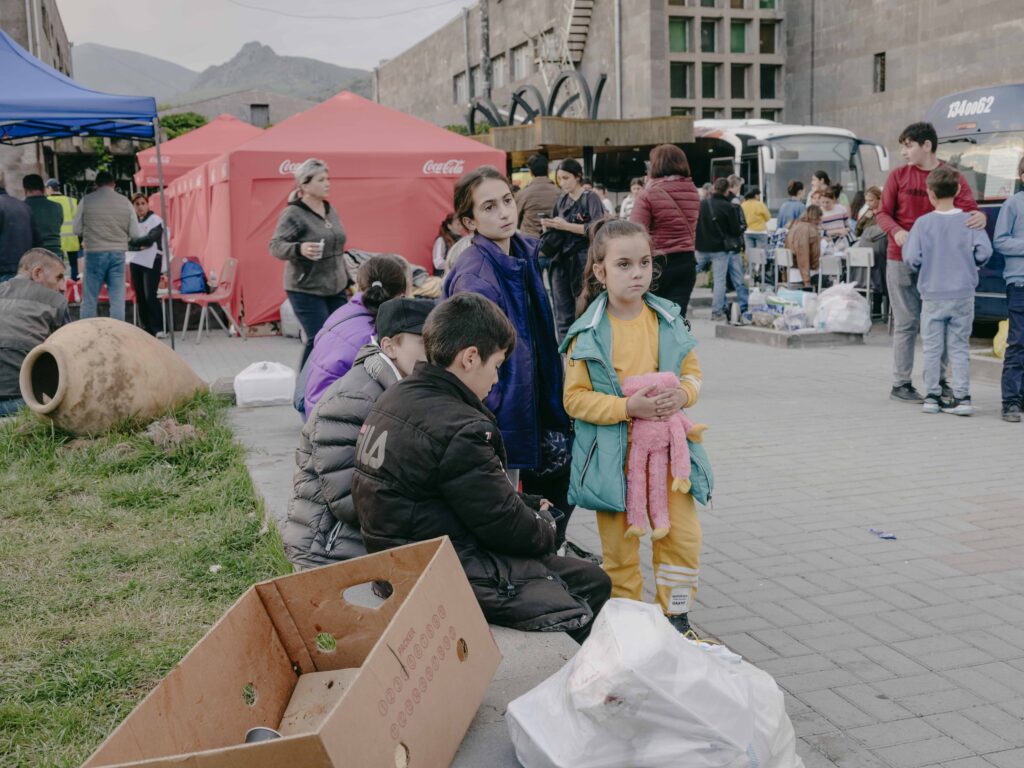
Giragosian emphasised that survival depends less on reclaiming what was lost but building ahead on what remains. Bryza echoed this, arguing that peace is the only way for long-term development and growth within Armenia, urging a turn towards regional interdependence.
For Nina, resilience means working, albeit imperfectly, towards stability and security. Armenia must play its cards wisely, and grow as a nation and as a people.
To her, the drive out of Stepanakert is unfinished, suspended in memory. Still, she insists on hope. “Why wouldn’t Armenia have a bright future? This is only a tragic chapter in a long book.”

